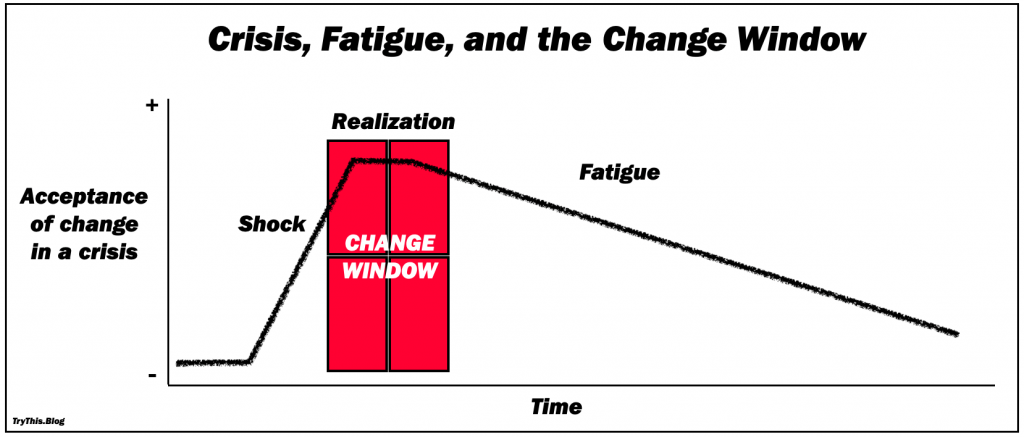Making change happen is tough. New products? Too risky. Agile working? Maybe next year. Better digital tools? We’ll look into it. Why change when life is good?
Toys “R” Us, Pan Am, Nokia, Sears, Myspace didn’t fail because of a crisis. They failed because they didn’t change when things were going well.
Management thinker John P. Kotter taught us that transformations need the aggressive cooperation of many individuals. But change feels risky. People love their comfort zones.
A crisis adds what’s lacking in good times: urgency. After the initial shock, people start to realize “what got us here won’t get us there.” Change is needed.
During the coronavirus pandemic, for example, people quickly accepted radical restrictions of their personal freedom. Lockdowns, social distancing, closed borders—normally unthinkable, suddenly ok.
A crisis has similar effects in organizations. When the business hits a wall, people suddenly become willing to change. Change, after all, could make things better.
For change leaders, a crisis is a gift.
Timing matters. How long does a lockdown hold? Every crisis has a change window—where people are willing to collaborate for change. It opens just after the first shock and slowly closes as crisis fatigue sets in. It’s the moment where change leaders can make the biggest difference. Once a crisis becomes the “new normal”, people will start to question whether change is really necessary. As fatigue grows, the change window closes.

TryThis >> Ask yourself: what change would catapult my idea, my brand, my product forward? Is the change window still open? If it is, don’t wait too long. As Winston Churchill said, “Never let a good crisis go to waste.”


